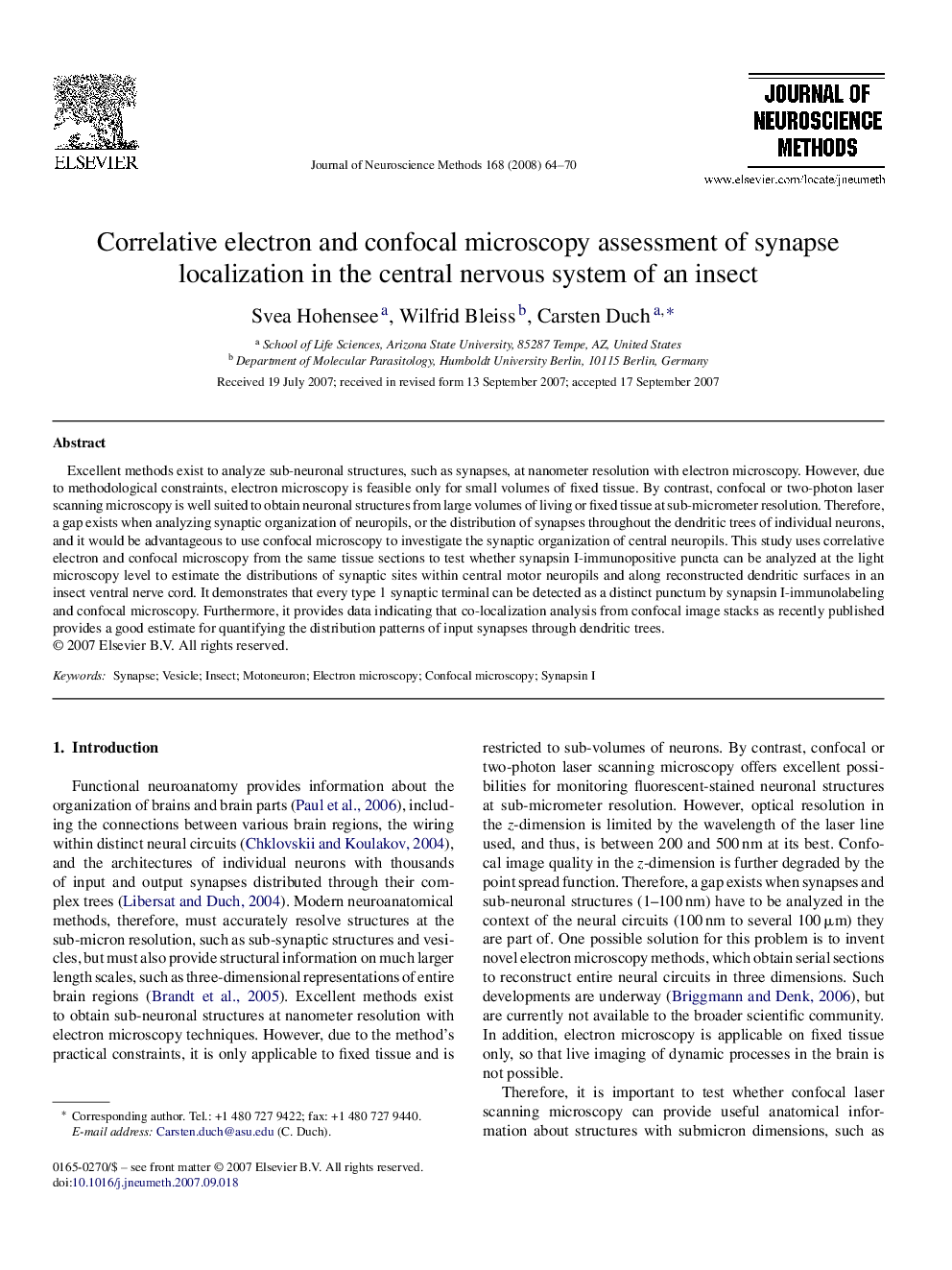| Article ID | Journal | Published Year | Pages | File Type |
|---|---|---|---|---|
| 4336614 | Journal of Neuroscience Methods | 2008 | 7 Pages |
Excellent methods exist to analyze sub-neuronal structures, such as synapses, at nanometer resolution with electron microscopy. However, due to methodological constraints, electron microscopy is feasible only for small volumes of fixed tissue. By contrast, confocal or two-photon laser scanning microscopy is well suited to obtain neuronal structures from large volumes of living or fixed tissue at sub-micrometer resolution. Therefore, a gap exists when analyzing synaptic organization of neuropils, or the distribution of synapses throughout the dendritic trees of individual neurons, and it would be advantageous to use confocal microscopy to investigate the synaptic organization of central neuropils. This study uses correlative electron and confocal microscopy from the same tissue sections to test whether synapsin I-immunopositive puncta can be analyzed at the light microscopy level to estimate the distributions of synaptic sites within central motor neuropils and along reconstructed dendritic surfaces in an insect ventral nerve cord. It demonstrates that every type 1 synaptic terminal can be detected as a distinct punctum by synapsin I-immunolabeling and confocal microscopy. Furthermore, it provides data indicating that co-localization analysis from confocal image stacks as recently published provides a good estimate for quantifying the distribution patterns of input synapses through dendritic trees.
